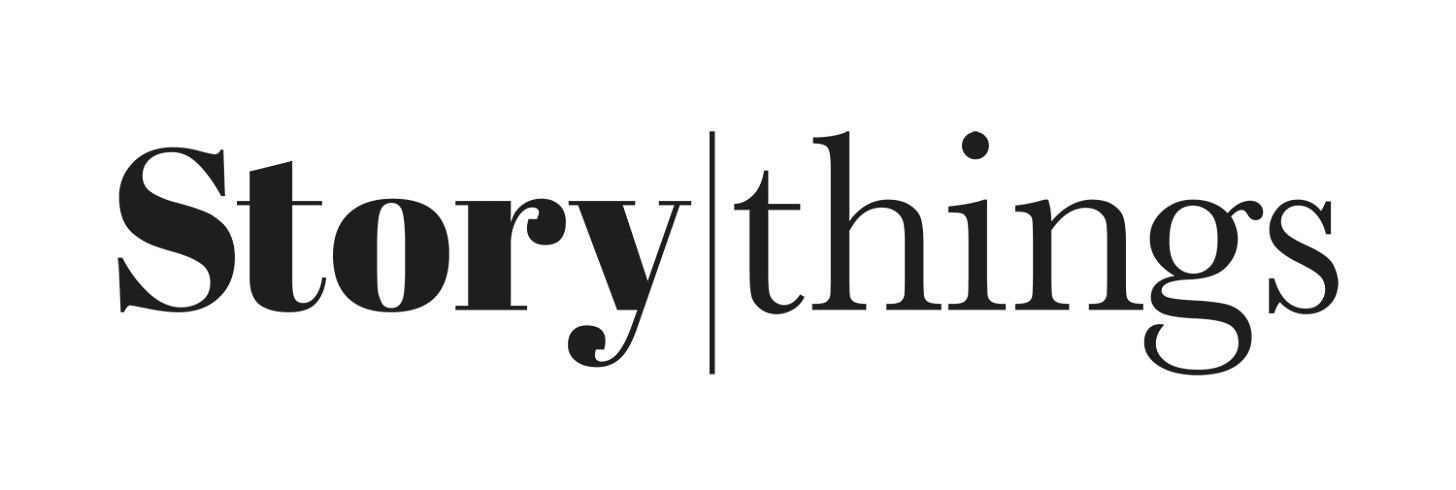✪ Time Is the Essence - #43
The importance of time for curated content. Great examples of curated newsletters. WebPage TimeDetector.
Welcome to a new issue of TRUST-able packed with useful info.
Here on Koh Samui, the weather is finally great and boiling hot. If there hadn’t been so much nice clear waters around me, I’d seriously be worried.
I am working in the mornings and keeping my body in shape in the afternoons. Evenings are for light relax, music and (very few) friends.
There’s a wonderful little house for rent next to mine, that’s open to anyone who would enjoy a couple of weeks of immersion into learning more about curation, value creation and trust-building.
In this issue:
1) Curation Insights
Time Is the Essence
WebPage TimeDetector
2) Examples of Great Curated Newsletters
Storythings
Scenius Mag
This Week in Social Media
1) Curation Insights
Thoughts and ideas on the value, role and benefits deriving from organizing, interpreting and contextualizing existing information for specific audiences and needs.
Time Is the Essence
Last month I challenged myself in learning more about AI, by committing to develop a new mini-app every month and to see what I learn from it and where this may take me.
A few days ago I released the first fruit of this commitment. A Chrome extension that identifies the original publication date of any webpage.
What for? You may rightly ask.
Contrary to what most Internet users think, a very significant number of webpages does not display, include or provide a direct viewable mean of determining when the web page was first published.
Thus, if you are a scholar, researcher, journalist or curator, who wants to understand in depth the content you are presenting, to either dissect it, review it, summarize it, criticize it or build on it, you are stuck.
Stuck, with three big questions:
a) Why do people hide the publication date of their content?
b) Where in the hell do you find that date, if it’s not visible on the page?
c) Why it is so damn important to know the original publication date of something you are going to curate?
a) Why do people hide the publication date of their content?
There are many reasons why many webpages online do not carry a publication date. In my experience, most missing dates on the web are fruits of a specific communication / branding strategy. All the others are just accidental consequences of lack of consistent procedures, overlooks, errors, bad management.
Fear of Looking Outdated
Leaving the date off makes a piece look timeless to the superficial reader. When your advice, price list, or research ages like milk, a missing date hides the smell and keeps most readers think it is recent..
SEO Advice
The author may have followed SEO tips suggesting that Google would prefer “fresher” content rather than seasoned pieces, or that it is a smart idea to keep updating an article to keep it visible inside search engine result pages, by showing only its last updated date..
Content Recycling
Content marketers rehash old posts into “new” ones or re-spin them with minor changes. Showing a date would expose the remix..
Thin or AI-Generated Pages
Auto-written or scraped material ages badly and fast. better to omit the clock than show the corpse..
Corporate Bureaucracy
Legal or PR wants wiggle room to “update” public, official statements without admitting they changed stance. Omitting the pub date gives them that option.
.
Badly Designed Templates
Many website buy and adopt pre-designed templates without having the knowledge or ability to customize them. Thus you can frequently run into blogs and independent authors websites that display no dates not by choice but by design inheritance.
b) Where in the hell do you find that date, if it’s not visible on the page?
The original publication date of a web page can be hidden in many different places. If you are lucky enough it may be found inside the meta tags associated to the page, but it may be as well hidden in javascript sections or in other strange places.
For example many websites have a sitemap that lists pages along with their last modification dates, which can give clues about publication timing.
Other sites store this data using the schema.org markup in JSON-LD or Microdata formats to facilitate search engines indexing of structured information.
Some websites embed the publication date in hidden HTML elements. These are not visible on the webpage but can be found in the source code.
Non-obvious places where the original pub date could be found are the Open Graph tags, designed for social media platforms, as well as RSS or Atom feeds associated to the site.
Sometimes it is so difficult to find it that one has to look at third-party resources like WHOIS, the Internet Archive or ProductHunt to get some useful data.
Tools like Ahrefs, SEMrush, or Moz can provide useful info to determine when a webpage was first indexed, but they all require a substantial paid subscription.
Plus, you can’t just look at all of these different resources and pick an answer from one of them. You need to establish rules as to which resources can be trusted and have greater weight in establishing a reliable reference date.
You may even need to triangulate among such diverse results to arrive at an approximate first publication date that may be reliable enough.
c) Why it is so damn important to know the original publication date of something you are going to curate?
Knowing the original publicate date of an article is very important for many reasons.
As a curator, having access to the original publication date provides a lot more context to understand, appreciate and evaluate the circumstances and times in which that idea, analysis or observation was developed.
Specifically:
Contextual Lens
A timestamp pins a work to its historical, cultural, and tech backdrop, letting you read it with the right pair of glasses.
.Credibility Check
Age reveals whether data, stats, or opinions might be old, stale or revised.
.Source Tracing
Knowing the origin date helps map citation chains, spotting who borrowed from whom and who broke new ground.
.Trend Mapping
A date helps you map the evolution of any human conversation to understand who borrowed from whom, and who broke new ground.
.Relevance Filter
Depending on the context of your curation, a date makes it easier to filter what’s historical, old school, classic, from what is contemporary, modern or freshly mint.
.Rights & Licensing
Creation date drives public-domain status, renewal windows, and fair-use thresholds vital for legal, legit curation.
.Authority Signalling
Ground-breakers, pioneers, explorers and any “first mover” pieces carry pedigree. Anchoring them in time underlines their pioneering weight also for readers.
Unless you know the original date of a web page it is difficult to critically analyze it, assess its value and understand the reasons and motives that may have led to its genesis.
WebPage TimeDetector
WebPage TimeDetector (WPTD) is a Chrome extension that I have built and that I am gifting to all my Premium subscribers.
WPTD makes it easy to rapidly identify the original publication date of any webpage, even and foremost when it is not available on the page itself.
It is very useful for journalists, content curators, researchers and scholars of all kinds, who during their work need to identify the age of articles, essays, or even tools or company pages where no date of original publication is being displayed.
To learn more about WPTD, please read here.
If you are a Premium subscriber you will find all of the instructions to download and install this new Chrome extension, right at the end of this newsletter.
*For the curious: I have challenged myself to create a new mini-app every month to support and reward those individuals who have chosen to support my work. I don’t know how successful I will be at delivering fully working and reliable mini-apps but I do take pride in trying.
All of the apps I will be releasing are generally designed for curators, indie authors, journalists and scholars. These are all tools that support specific needs and desires of those who love to search and uncover valuable resources.
The next app in the works is dedicated to find copyright-free videos that can be utilized without having to obtain permissions, pay use licenses or risk legal litigations. There are literally millions of them, but they are not so easy to find.
2) Great Curated Newsletter Examples
These are newsletters that don’t give advice, don’t reveal secret formulas and don’t tell you what to do. They reveal and unearth precious things, stories and resources that may escape our limited radars or that could be very hard to find or run into.
Storythings
A newsletter about examples of best practice in storytelling
by Matt Locke, Hugh Garry, Anjali Ramachandran
About the authors:
Storythings is a UK agency targeting international B2B companies since 2013. The team is a mix between of strategy consulting agency and a media production studio. The editors and owners are three media experts producers, who scout, edit and curate interesting stories that have inspired them in each issue.
Newsletter description:
Weekly newsletter curating interesting stories in each issue. Surfaces ten pieces of content, including articles, videos, research, podcasts, selected for the way they utilize storytelling.
Insights:
Published for over 10 years, the Storythings newsletter started as an internal “interesting links” email, then escaped into the wild when clients kept forwarding it to their friends.
Storythings is also a UK-based agency focusing on strategic, format-driven storytelling for B2B brands. “We obsess over *content formats* and ideas”. From administrative documents to culture-first podcasts, Storythings creates storytelling experiences that people enjoy being part of. “We bring media craft to B2B.” In other words: the agency takes cues and idea from media, not marketing, to create work that’s human, original, and engaging.
Source: https://indieagency.news/meet-an-indie-agency-storythings/
Interview with Storythings authors:
Storythings publishes two more newsletters:
Adds value by:
Carefully selecting unique interesting stories generally outside popular mainstream content.
Introducing all stories first synthetically and then in a more descriptive one paragraph-long introduction.
Providing a time committment tag for each story presented.
Adding a short introduction to each curated story that explains why it matters and how it fits broader storytelling trends.
Using a direct, informal and casual tone of voice, that feels friendly and authentic.
Showing, not telling. By analysing others’ work instead of self-promoting.
Scenius Mag
Narratives of creators-led non-zero-sum games to get extraordinary things done.
by Adriana Lukas and Ron Kersic
About the authors:
Futuring architects. That's how the two authors,
Newsletter description:
Scenius Mag curates articles, podcasts, and videos that present different ways of seeing the world. The overarching goal is to suggest new alternatives for current challenges. It carefully avoids sharing obvious mainstream ideas, quick-fixes and remedies. It rather invites exploration, reflection while presenting new ways to look at reality and at how a different future could be built. Every edition contains an essaythat blends storytelling, systems thinking, and cultural critique. No filler content, no generic link-dump.
Insights:
The two authors love to explore what will be next at the intersection of culture, business, design, and technology and their thoughts and ideas often open up perspectives and panoramas we would otherwise rarely consider.
Adds value by:
Brushing the contours and context of a specific theme/issue/idea and then expanding it through the curated contribution from a few selected author essays, coming from different backgrounds and perspectives.
Bringing to my attention important issues, topics and ideas while asking relevant questions and proposing not one, but multiple alternative viewpoints from other interesting authors.
Helping me think, ponder, while discovering new voices and perspectives.
Leading with story then unfolding systems and ideas, never the other way around.
This Week in Social Media
All you need to know for social media marketing managers.
by Joshua Parkinson
About the author:
Newsletter description:
Weekly newsradar on social media marketing, focusing on technology, trends, resources and not-to-be-missed content for professionals in this field. This curated newsletter packs an audio summary, 30+ highly relevant stories including top news, tutorials, listicles, tools, case studies, videos, infographics, quotes and recommended newsletters.
Insights:
The author smartly leverages the communication and relationship-building power of his newsletter to create useful and high-value content that serves the very audience of his own social media marketing platform (Post Planner): Social media marketers in need to stay updated on tools, strategies, stories and trends that can positively impact their work.
Adds value by:
Being very focussed on one topic.
Talking directly to a very specific and well-defined audience.
Being very comprehensive in his scouting and curation.
Making useless the need to read other publications to keep oneself updated on social media and content marketing issues.
WebPage TimeDetector (for Premium subs)
WebPage TimeDetector is a Chrome extension that makes it easy to rapidly identify the original publication date of any webpage, even and foremost when it is not available on the page itself.
This is a mini-app that I have developed myself (with the help of AI) for my Substack Premium subscribers.
Here’s how to get and install the WebPage TimeDetector extension for Google Chrome.









